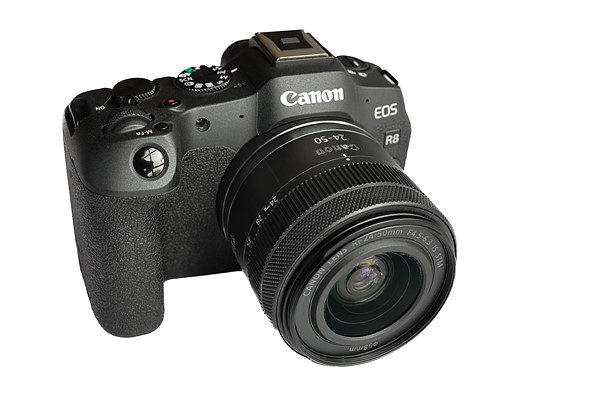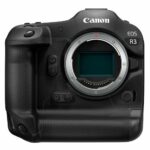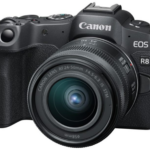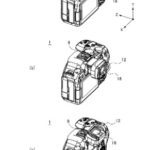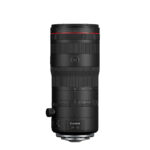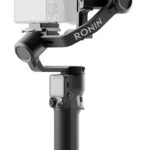I had hoped to trial the Canon EOS R8 whilst on a recent break in Vanuatu, but sadly the Australia Post Gods stepped in and made sure the camera had a stopover on the Nullabor somewhere for 5 days so it didn’t arrive in time sadly.
No matter, I get to test it here and now, and in short, I like it. I like it very much.
The first thing that gained my attention was the weight (461g body only) – or lack thereof when compared to my Canon 5Ds or even the Fujifilm X-S10. This is not to say the R8 doesn’t feel solid, it does. But what it does mean is that even with my gammy wrist, shooting for reasonably long periods of time is not a major restriction.
Basic Specifications
Canon sent me the “kit” pack of the R8 which contains a 24-50mm f/4.5-63 zoom lens in the box, and for the average person this is a perfect fit. The R8 however is certainly not aimed at the average shooter in that sense; that is left more to the R100 and R10 models say, as at $2499 body only and $2799 with the kit lens, we are certainly talking higher up the evolutionary scale here.
What you do get though is a very functional beast indeed, capable of shooting up to 40 frames a second, 24.2 megapixels and 4K video at 60p full frame.
Speaking of video, the R8 is also capable of full HD 180p for glorious slo-mo footage.
For stills, RAW burst to 30 frames a second is supported with ½ second pre-shooting and video 3 to 5 seconds pre-shooting is available.
The R8 is damn good in low light too. Simply change the setting and you get ISO in still shots up to 102,400 and 25,600 for video., And the noise is delightfully minimal even at these settings.
Auto Tracking
It’s not something that I use personally, but a current seemingly “must have” feature is auto tracking. Built in to the R8 is the option to automatically zero in on such diverse things as humans, animals (dog, cat, bird and horse) and specific vehicles (car, motorcycle, train and aeroplane). Canon says that even if the scene changes dynamically, the R8 can track subjects over the entire frame.
Of course, it’s a given that Bluetooth and Wi-fi are built in and the R8 can be charged via USB-C although it is recommended (and faster) to use the supplied 240v / 12v charger of course.
The layout of the R8 is pretty atypical Canon and no-one should have any issues identifying and coming to grips with the main controls supplemented by the on-screen menus. All the knobs and dials etc fall logically into the correct fingers and the vari-angle 3” monitor makes it easier to see the subject when shooting high or low angles.
Common to Canon, there is no built-in flash though, although of course there is a top mounted hot shoe waiting for a SpeedLight to turn up at some point.
As mentioned previously, the relatively low weight and bulk make the R8 a delight to shoot with, and I am a little sad I won’t get an opportunity to put it to the test in my benchmark of shooting motor sports. That would test it (and also stretch the auto tracking to the limit.)
Manuals
One thing I do lament – and Canon is not alone here – is the omission of a fully blooded paper manual in the box. You do get a multi-lingual starter one of about 20 pages, but I could not find anything more comprehensive online. To be fair, I guess Canon would say that someone buying the R8 would have more than a passing knowledge of photography and video and don’t really need any hand holding on that score.
If you are jumping to the R8 from something like a point and shoot, I highly recommend reading the manual thoroughly and getting very familiar with all the controls, both hardware and software based. It will make your life much easier in the long run.
Canon does have some very good online tutorials as well, and those will also assist the more inexperienced user.
Summary
Canon has transitioned from the EOS to the new R series eras very nicely, and if I had purchased an R8, I doubt the 5Ds would see much more general use and probably be relegated to my astrophotography Miller tripod forever after.
The corresponding development of R series lenses might be a bit of a pain to those – and there are many – who have a swag of EF based lenses at their disposal, but there are a number of brands making adaptors to circumvent this issue and they’ll set you back about $180. I reckon that is a small price to pay for the superiority of the R series lenses.
If you are thinking of switching from an EOS D series to an R, and are not sure which of the range to choose, I suggest dropping into your local camera store (and no I do not mean a chain that also flogs furniture, bedding, fridges and XBOXs but a dedicated location such as a Camera House – and no they do not sponsor me) and have a play and do a comparison.
There is a lot of features and functionality to choose from and a bunch of things to really like.

